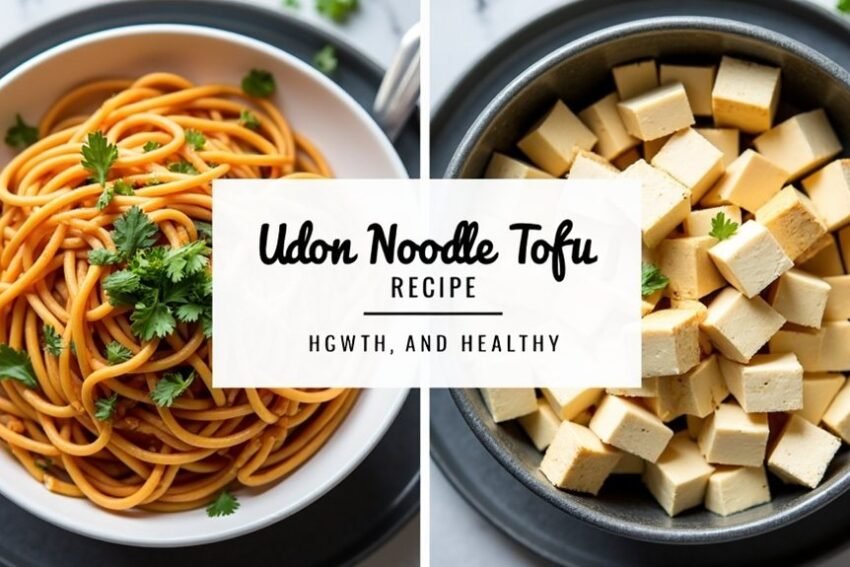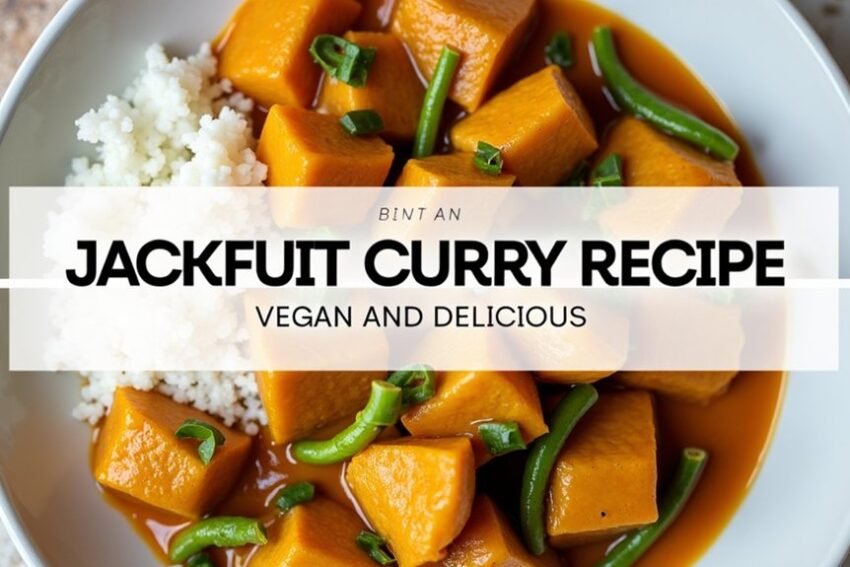Udon Noodle Tofu Recipe – Hearty and Healthy
Udon Noodle Tofu Recipe – Hearty and Healthy
Udon noodles, with their unique chewiness, have enchanted taste buds across the globe for centuries. If you’re looking for a quick yet nutritious dish that fits seamlessly into your busy weeknight routine, this Udon Noodle Tofu recipe might just be what you need. Combining protein-rich tofu with vibrant vegetables, it offers a hearty meal without sacrificing health. Plus, you’ll uncover the simple tricks to customize it to your palate, making it not only satisfying but also intriguing. What are the key ingredients that could enhance your experience?
Key Takeaways
- This quick udon noodle tofu recipe combines plant-based protein and fiber for a hearty, healthy meal under 30 minutes.
- Fresh udon noodles offer a chewier texture compared to dried options, enhancing the dish’s overall appeal.
- Incorporating mixed vegetables helps promote a nutritious, colorful meal full of essential vitamins and minerals.
- Soy sauce or tamari adds depth of flavor, while optional garlic and ginger provide additional aromatic benefits.
- Leftovers can be easily stored for a quick, nutritious meal, making it perfect for busy lifestyles.
History
Udon noodles, a beloved staple in Japanese cuisine, have a rich history that traces back to their origins in China. Introduced to Japan during the Nara period (710–784), these thick wheat noodles quickly gained popularity.
Key points about udon’s historical journey include:
-
Edo Period (1603–1868): Udon evolved into its modern form and became widely consumed across Japan.
-
Regional Varieties: Different regions began creating their unique versions of udon, such as Inaniwa udon in Akita.
-
Advancements in Technology: Innovations in milling technology made udon more accessible, enhancing its popularity.
-
Cultural Significance: Udon holds a special place in Japanese culture, often favored by Buddhist monks for its simplicity and nourishment. In addition, udon noodles provide complex carbohydrates, which help in weight management and diabetes control.
-
Global Spread: Over time, udon’s appeal expanded internationally, becoming a common dish in places like the United States and Europe.
Udon isn’t just a food item; it represents Japan’s culinary traditions and regional identities.
As it continues to evolve, udon reflects a blend of historical influence and local innovation, showcasing the rich tapestry of Japanese gastronomy.
Recipe
Udon Noodle Tofu is a delightful dish that combines the chewy texture of fresh udon noodles with the savory richness of tofu and a medley of vibrant vegetables. This recipe is perfect for a quick weeknight meal or can be served to impress guests. The harmonious blend of flavors, amplified by the addition of soy sauce and aromatics, creates a satisfying dish that’s as nutritious as it’s delicious. Fresh noodles provide a thick, chewy texture compared to dried noodles, ensuring every bite is satisfying.
To get started, you’ll want to gather and prepare all your ingredients. Using extra firm tofu will help you achieve a nice texture, while fresh udon noodles will give the dish an authentic touch. Feel free to customize the vegetable mix to your liking, and prepare the noodles according to the package instructions to guarantee they’re cooked to perfection.
With a few simple steps, you’ll have a scrumptious meal that highlights the wholesome goodness of plant-based ingredients.
Ingredients:
– 7 ounces extra firm tofu
– 14 ounces fresh udon noodles
– ¼ cup soy sauce or tamari
– 2 cups mixed vegetables (broccoli, carrots, bell peppers, mushrooms)
– Fresh herbs and sesame seeds for garnish
– Oil for cooking
– Optional: garlic, ginger, cornstarch, sesame oil
To begin cooking, press or pat dry the tofu and then cut it into cubes or squares. Heat oil in a wok or pan over medium heat, add the tofu, and cook until golden brown.
In the same or a separate pan, stir-fry your prepped mixed vegetables until tender, adding aromatics like garlic and ginger if desired. Meanwhile, cook the udon noodles according to package instructions.
Once everything is cooked, combine the udon noodles, vegetables, and tofu in a large bowl along with the soy sauce or tamari, mixing well to coat all the ingredients evenly. Serve hot and garnish with fresh herbs and sesame seeds.
For the best results, consider pressing the tofu for 10-30 minutes before cooking to remove excess moisture, which will allow for better browning. Using fresh udon noodles enriches the overall taste and texture of the dish.
Feel free to mix and match different vegetables or add extras such as spinach or green onions for added flavor and nutrition. Finally, garnishing with sesame seeds or red pepper flakes can raise the dish and add an extra pop of flavor. Enjoy your culinary creation!
Final Thoughts
There’s a lot to love about the Udon Noodle Tofu recipe, making it a fantastic addition to your culinary repertoire. This dish offers versatility in preparation, allowing you to choose from various cooking methods for the tofu, like baking or pan-frying. You can easily swap out vegetables to match your personal tastes, ensuring a unique experience every time.
The health benefits are impressive too. The combination of tofu and vegetables delivers plant-based protein and dietary fiber, promoting fullness and nutrition. Utilizing mushroom-based sauces adds antioxidants that support a healthy immune system, while the dish is also vegan-friendly and accommodates various dietary preferences.
Efficiency is a key element; you can whip this meal up in under 30 minutes. Pre-cooked noodles can help save even more time, and the dish is easily adjustable for different serving sizes.
Finally, consider your serving suggestions—garnishing with green onions, sesame seeds, or chili flakes improves both flavor and presentation. Adding sauces like Thai peanut can raise the dish further.
Customize the ingredients to your liking, and enjoy a hearty, healthy meal that fits neatly into your busy lifestyle.
FAQ
If you’re considering trying your hand at the Udon Noodle Tofu recipe or have questions after making it, check out these frequently asked questions.
How do I cook udon noodles?
– Boil the noodles for 30-60 seconds.
– Strain immediately to prevent overcooking.
– Rinse with cold water to stop the cooking process.
Why use extra-firm tofu?
– Extra-firm tofu holds its shape better and absorbs flavor well.
– Always press tofu to remove excess moisture before cutting.
How can I improve tofu flavor?
– Marinate tofu in soy sauce, cornstarch, and sesame oil for added taste.
– Fry until browned on all sides for crispiness.
What’s the best way to stir-fry?
– Start with aromatics like garlic and ginger.
– Add vegetables after the aromatics have softened.
– Combine everything with sauce at the end, stir-frying for 1-2 minutes.
How should I serve it?
– Garnish with green onions and sesame seeds for extra flavor.
– Serve hot for the best taste and texture.
– Store leftovers in the fridge for quick meals.
– This dish provides a balanced nutritional value of 1.5 of 5 a day for a healthy diet.


